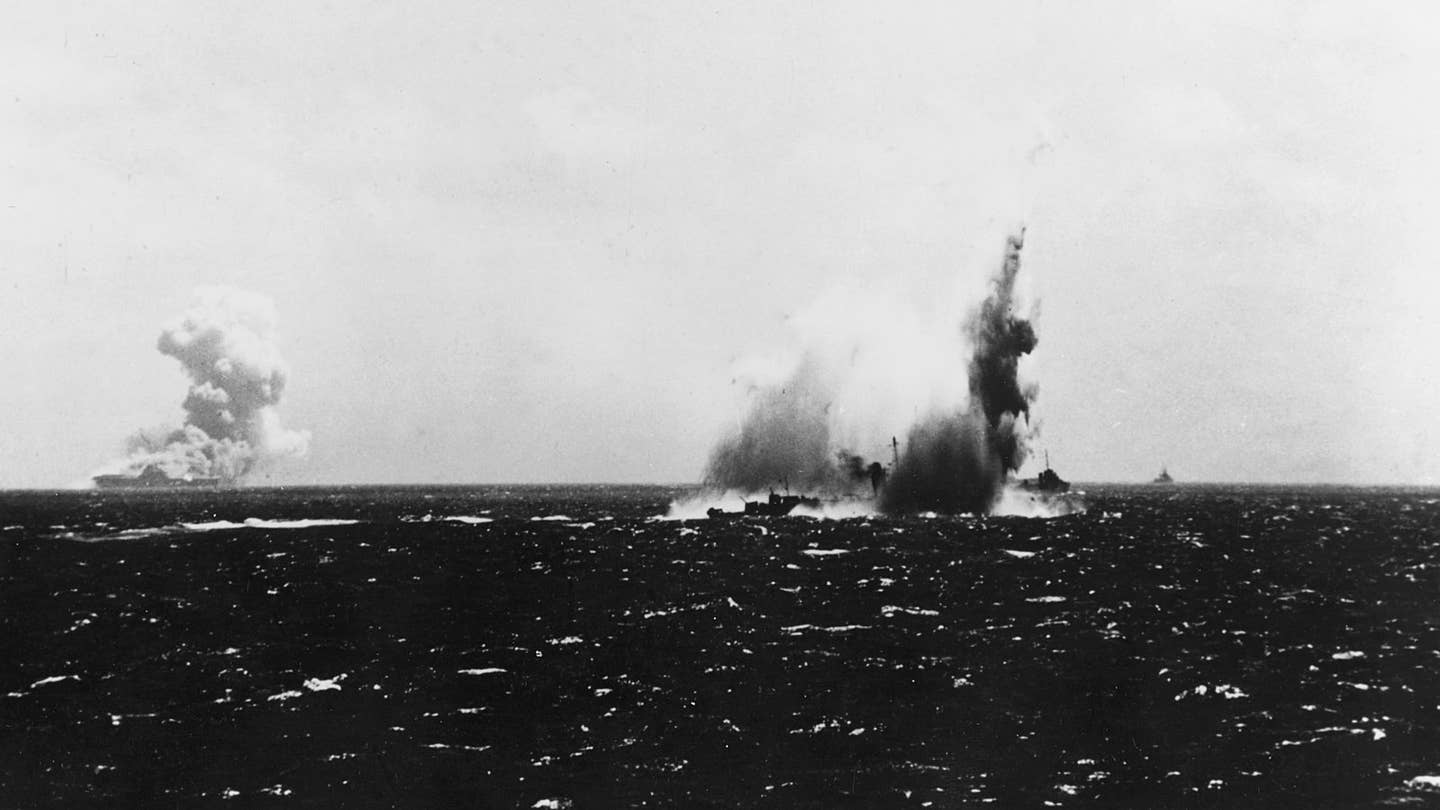This was the most successful torpedo attack of World War II

O’Brien hit by torpedo as USS Wasp burns. Both ships were torpedoed and sunk by I-19.
SUMMARY
The submariners of World War II had one of the most dangerous jobs of the war. While Germans took the worst casualty rates, the American and Japanese duel in the Pacific saw thousands of lives lost and millions of tons of shipping destroyed. American crews destroyed an estimated 55% of Axis warships in the Pacific and 5.3 million tons of shipping.
But arguably, the most successful single submarine attack of World War II came from a Japanese sub. On September 15, 1942, the Japanese sub I-19 fired six torpedoes that hit three ships. It sank a carrier, heavily damaged a battleship and sunk a destroyer.
The Japanese submarine I-19
If I-19 rings a bell, but you can't remember why, the boat was one of the submarines assigned to the attack on Pearl Harbor. On Dec. 7, 1941, it patrolled northeast of Oahu. Two days later, it took part in an unsuccessful hunt for a U.S. carrier near Hawaii.
Mitsubishi Heavy Industries originally built the submarine from 1938 to 1939 for the Imperial Japanese Navy. The large submarine carried a seaplane for reconnaissance and could refuel other ships and planes, though its tanks were not large enough to do this often.
I-19 saw its first major combat against America. On Dec. 7, 1941, it patrolled northeast of Oahu as part of the Pearl Harbor attack. Two days later, it took part in an unsuccessful hunt for a U.S. carrier near Hawaii. It went on to hunt Allied shipping in the Pacific for most of 1942, achieving a few small successes.
While the Pearl Harbor Attack is much more famous, I-19 found its greatest victory in 1942.
The submarine torpedo spread
At about 10 a.m. on September 15, 1942, the soundman of I-19 reported contact with multiple ships. But when the commander ordered the ship to periscope depth and looked, he could find no sight of ships.
About an hour later, he tried again and saw an amazing sight: a carrier, heavy cruiser and multiple destroyers. He didn't know it yet, but he had found two American carrier task forces sailing together near Guadalcanal along with multiple troop ships carrying U.S. Marines.
As the Japanese sub attempted to get into firing position, it got lucky. One of the American carriers, the USS Wasp, turned directly toward it.
I-19 quickly fired six torpedoes from the bow.
At least two crashed into the USS Wasp, creating massive holes in the hull and starting fires. The ship quickly burned. Two other ships came alongside to assist with damage control and evacuation, but the carrier was quickly lost.
The next ship hit by the spread was the battleship, North Carolina. A torpedo struck below the armor belt and ripped open the hull, quickly allowing water to fill compartments. The battleship commander ordered counterflooding to keep the ship level. It survived the battle but was out of the war for two months as it transited for repairs.
Finally, a torpedo narrowly missed the other carrier, the USS Hornet, as the final torpedo struck the USS O'Brien, a destroyer. The O'Brien initially thought it could survive the damage, and the captain followed orders to take the ship to California.
But over the next month, structural damage became apparent. More than a month and nearly 3,000 miles later, the O'Brien broke apart in the Pacific.
SHARE
